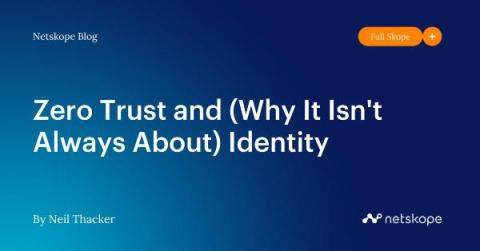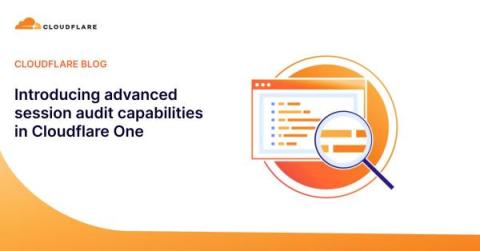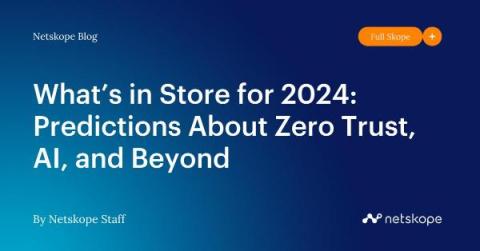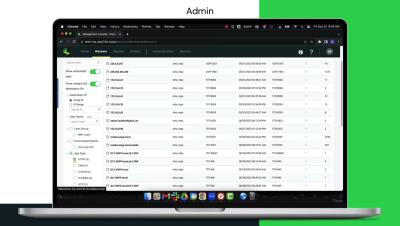Security | Threat Detection | Cyberattacks | DevSecOps | Compliance
Zero Trust
Zero Trust and (Why It Isn't Always About) Identity
What is the relationship between zero trust and user identity? There’s no doubt that identity is a fundamental component of an effective zero trust approach, but there is also a danger that organisations become so overly focused on this one element, they forget there are others. To believe that achieving zero trust is all about user identity is, I believe, a fundamental misunderstanding of the concept.
Introducing advanced session audit capabilities in Cloudflare One
The basis of Zero Trust is defining granular controls and authorization policies per application, user, and device. Having a system with a sufficient level of granularity to do this is crucial to meet both regulatory and security requirements.
5 Reasons to Implement Zero Trust & 5 Steps to Get You Started
What's in Store for 2024: Predictions About Zero Trust, AI, and Beyond
With 2024 on the horizon, we have once again reached out to our deep bench of experts here at Netskope to ask them to do their best crystal ball gazing and give us a heads up on the trends and themes that they expect to see emerging in the new year. We’ve broken their predictions out into four categories: AI, Geopolitics, Corporate Governance, and Skills. Here’s what our experts think is in store for 2024.
Embracing Zero Trust: Revolutionizing Cloud Technology Adoption
As technology continues to advance, cloud computing has become an integral part of our digital landscape. While the benefits of cloud technologies are undeniable, concerns about data security and privacy have often overshadowed and slowed down its adoption. However, a new paradigm shift called “Zero Trust” is poised to revolutionize the way we perceive and embrace cloud technologies.
ZTNAs Address Requirements VPNs Cannot. Here's Why.
When organizations were forced to shift to remote work during the pandemic, they needed a quick-fix solution that would enable their remote employees to securely access work resources. For many, this solution came in the form of VPNs. However, VPNs were not designed for the bring your own device (BYOD) and cloud app security use cases. While VPNs can provide remote access, it may come as a surprise that they fall short when it comes to security.
How to Apply Zero Trust Architecture (ZTA) In the Real World
How well do you sleep at night? Odds are you would sleep better if you could wake up to Zero Trust Architecture (ZTA). A true ZTA network makes incident response wake-up calls far less likely by shutting down data breaches, ransomware threats or any kind of unauthorised network access. It would also save your organisation at least £500,000 over a four-year period, making your security efforts much easier to advocate for. That’s the dream anyway.
Top tips: 3 common Zero Trust myths debunked
Top tips is a weekly column where we highlight what’s trending in the tech world and list ways to explore these trends. For the final week of Cybersecurity Awareness Month, we’re playing myth-busters and debunking three popular misconceptions about Zero Trust. Cyberthreats are becoming more and more brazen over time, and let’s face it—without a strong Zero Trust framework, your organization doesn’t have a dog in the fight.











